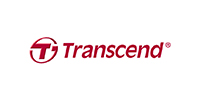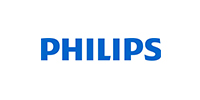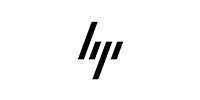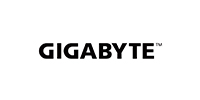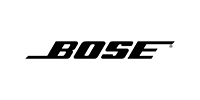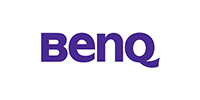Top Steps to Protect Yourself from Loan Scams in the US 2025

Top Steps to Protect Yourself from Loan Scams in the US 2025: Stay Safe and Secure Your Finances
Loan scams continue to be a serious threat to consumers across the US in 2025. Knowing the steps to protect yourself from loan scams is essential to safeguarding your finances and personal information. This article explores effective strategies and loan scam prevention tips to help you identify and avoid fraudulent lenders, ensuring safe borrowing practices in 2025.
Table of Contents
- Understanding Loan Scams in the US 2025
- Common Types of Loan Scams to Watch Out For
- Steps to Protect Yourself from Loan Scams
- How to Recognize Fake Loan Offers
- Safe Borrowing Practices in 2025
- What to Do If You Are a Victim of a Loan Scam
- Conclusion
- FAQs
Understanding Loan Scams in the US 2025
In 2025, loan scams have become increasingly sophisticated due to advances in technology and the widespread use of online financial services. These scams typically target individuals seeking various types of loans — including personal, payday, student, or business loans — with the intent to steal money, sensitive personal information, or both.

The proliferation of online lending platforms has provided convenience but also created opportunities for scammers to pose as legitimate lenders. Understanding how these scams operate is vital to protecting yourself.
Why Are Loan Scams Increasing in the US?
- Growing demand for quick loans: More Americans are turning to online lenders for fast cash solutions.
- Advanced scam tactics: Phishing, social engineering, and fake websites have become more convincing.
- Regulatory challenges: Some online lenders operate in loosely regulated spaces, increasing risk.
Impact on Borrowers
Falling victim to a loan scam can have severe consequences including:
- Identity theft and misuse of personal data.
- Financial loss from upfront fees or fraudulent charges.
- Damage to credit scores, complicating future loan approvals.
- Long-term difficulty obtaining legitimate loans or financial products.
Being aware and proactive is the best defense. For further details on consumer protection, visit the Federal Trade Commission (FTC) website.
Common Types of Loan Scams to Watch Out For
Effective loan scam prevention begins with knowing the common scams that plague borrowers. The table below summarizes typical scam types, how they work, and warning signs to watch for:
| Scam Type | Description | Warning Signs |
|---|---|---|
| Upfront Fee Scams | Lenders demand payment of processing or administrative fees before loan approval or disbursement. | Requests for upfront payments, pressure to pay immediately. |
| Fake Lender Websites | Scammers create fake websites mimicking legitimate lenders to capture personal data or money. | Poor website design, no verifiable contact info, suspicious URLs. |
| Phishing Emails and Calls | Unsolicited loan offers via email or phone asking for personal or financial info. | Unexpected contact, requests for sensitive information, generic greetings. |
| Identity Theft Scams | Scammers use stolen personal info to apply for loans in your name. | Unknown loan accounts, credit report anomalies. |
Additional Scam Variations
- Loan Flipping: Repeated refinancing that traps borrowers in a cycle of debt.
- Grant or Forgiveness Scams: Fake promises of loan forgiveness for upfront fees.
- Social Media Scams: Fraudulent loan offers advertised on platforms like Facebook or Instagram.
![]()
For more tips on spotting scams, check out FTC’s guide on phishing and scams.
Within the US lending market, it’s also helpful to understand legitimate resources. You can visit our loan advice section for trusted guides on borrowing safely.
Read also:
[su_posts template=”templates/list-loop.php” posts_per_page=”5″ tax_term=”6″ tax_operator=”AND” order=”desc”]
Steps to Protect Yourself from Loan Scams
The most important steps to protect yourself from loan scams involve vigilance, thorough research, and using secure financial practices. Follow these essential guidelines to stay safe:
1. Verify the Lender’s Legitimacy
Always confirm that the lender is registered and licensed to operate in your state. Use the NMLS Consumer Access database to verify lenders’ credentials and licensing status.
2. Never Pay Upfront Fees
Avoid any lender asking for fees before the loan is disbursed. Legitimate lenders do not require advance payments for processing or administrative costs. For more on loan scams and how to spot them, visit our detailed guides.
3. Protect Your Personal Information
Do not share sensitive information such as your Social Security number, bank account details, or passwords until you have verified the lender’s authenticity. Learn about identity theft prevention to safeguard your data.
4. Read All Terms and Conditions
Carefully review the entire loan agreement. Be alert for hidden fees, unusually high-interest rates, or unrealistic repayment terms that seem suspicious. Check out our articles on financial education for tips on understanding loan contracts.
5. Use Secure and Trusted Platforms
Apply for loans only through reputable financial institutions or well-known online lending marketplaces. Avoid unfamiliar or unverified websites. Our online lending tag has trusted platform reviews and advice.
6. Monitor Your Credit Report Regularly
Regularly check your credit reports from the three major bureaus to detect unauthorized inquiries or accounts that could indicate identity theft. You can obtain free credit reports annually from AnnualCreditReport.com.
7. Trust Your Instincts
If an offer seems too good to be true or if pressure tactics are used, it is likely a scam. Legitimate lenders respect your decision time and transparency. Browse more on consumer protection strategies.
How to Recognize Fake Loan Offers
Recognizing fake loan offers is a crucial part of protecting yourself. Watch out for these red flags:
- Unsolicited loan offers via phone calls, emails, or social media messages.
- Requests for payment before loan approval or disbursement.
- Interest rates or terms that seem too good to be true.
- Websites with poor design, typos, or grammatical errors.
- Lack of verifiable contact information or physical address.
Quick Checklist to Spot Fake Loan Offers
| Red Flag | What to Look For |
|---|---|
| Unsolicited Contact | Unexpected loan offers from unknown sources. |
| Upfront Payment Requests | Demands for fees before you receive the loan. |
| Suspicious Website | Check for HTTPS security, contact info, and professionalism. |
| Too Good to Be True Terms | Very low interest rates or guaranteed approval without credit checks. |
| Pressure Tactics | Urgent deadlines or demands to act immediately. |
Safe Borrowing Practices in 2025
Adopting safe borrowing practices in 2025 minimizes risks associated with loan scams and helps you maintain strong financial health.
Use Licensed Lenders Only
Ensure your lender complies with federal and state regulations. Verify licensing through resources like the NMLS Consumer Access platform.
Opt for Transparent Terms
Choose loans with clear, understandable repayment plans and no hidden fees. For tips on understanding loan terms, see our financial education articles.
Keep Digital Security Tight
Use strong passwords and secure internet connections when applying for loans online. Learn more about cybersecurity best practices to protect your data.
Consult Financial Advisors
If unsure about a loan offer’s legitimacy, seek advice from certified financial advisors. Our financial advice section has trusted resources.
What to Do If You Are a Victim of a Loan Scam
If you suspect you have been targeted by a loan scam, act quickly and follow these steps:
1. Report to Authorities
File complaints with the Federal Trade Commission (FTC) and your state attorney general’s office.
2. Contact Your Bank and Credit Bureaus
Notify your bank and place fraud alerts or freezes on your credit reports with major bureaus. Learn how to monitor your credit effectively.
3. Change Passwords and Secure Accounts
Immediately update login credentials for all your financial and personal accounts to prevent further unauthorized access.
4. Monitor Your Credit Report
Regularly check your credit reports for suspicious activity for at least 12 months. Use trusted services like AnnualCreditReport.com for free reports.
5. Seek Legal or Financial Advice
Consult with legal or financial professionals who specialize in fraud recovery to help mitigate any damage caused by the scam.
Conclusion
Knowing the steps to protect yourself from loan scams in the US in 2025 is essential in today’s digital lending environment. By verifying lenders, avoiding upfront fees, safeguarding your personal information, and practicing safe borrowing, you can secure financing confidently without falling victim to fraud. Stay informed by exploring our consumer protection content and remain vigilant to protect your financial future.
FAQs
Q1: What are the most common loan scams in the US?
The most common loan scams include upfront fee scams, fake lender websites, phishing emails, and identity theft related to loan applications.
Q2: How can I verify if a lender is legitimate?
You can verify lenders through the NMLS Consumer Access website, check state licensing, and read reviews from trusted sources.
Q3: Should I ever pay fees before receiving a loan?
No legitimate lender requires upfront fees before loan disbursement. Paying fees upfront is a major red flag for scams.
Q4: What should I do if I get a suspicious loan offer?
Do not respond or share personal information. Report the offer to the FTC and other relevant authorities.
Q5: How often should I monitor my credit report?
Regular monitoring, at least once every few months, helps detect unauthorized activity early and prevents identity theft.





